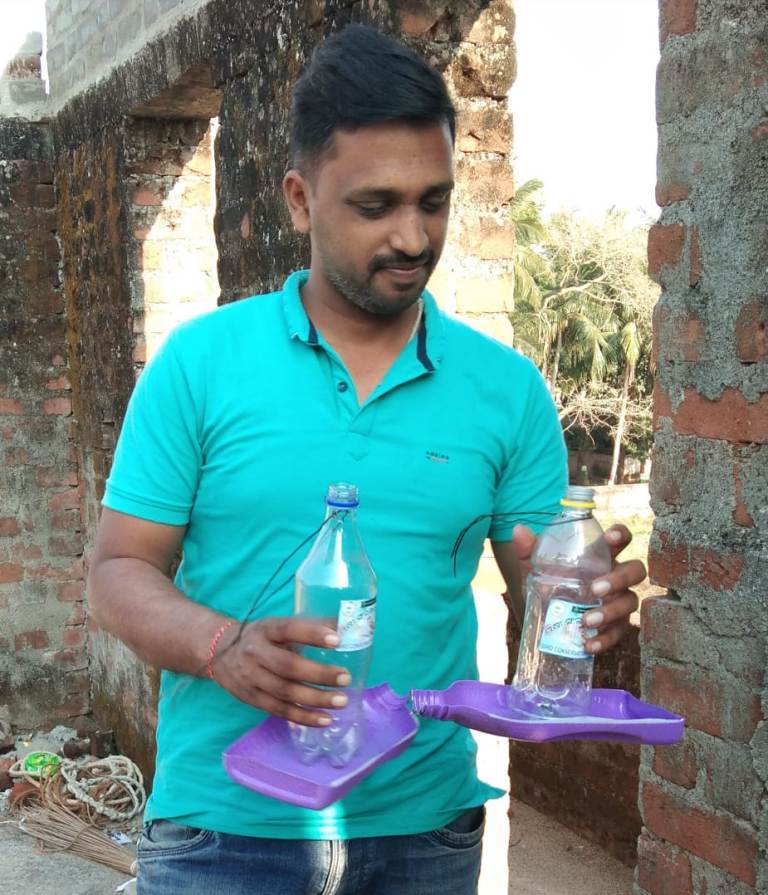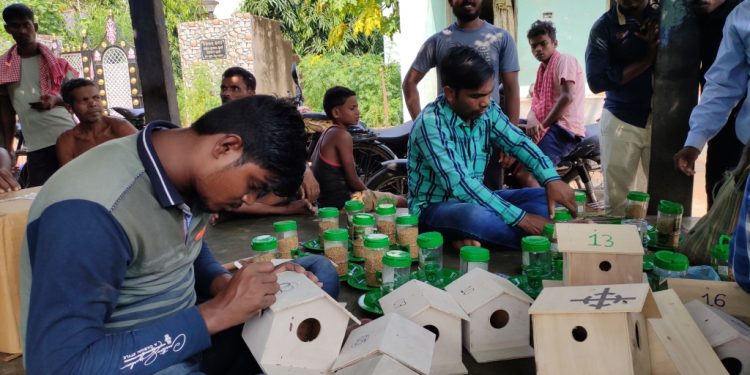Ahead of the World Sparrow Day, Odisha Paryavaran Sanrakshan Abhiyan (OPSA) and conservationists have come forward with a noble venture of providing artificial nests for the endangered species
BHUBANESWAR: The numbers of House Sparrows, one of the most endangered species in the world, are dwindling day by day. Ahead of the World Sparrow Day, Odisha Paryavaran Sanrakshan Abhiyan (OPSA), conservationists like Rabi from Ganjam and Mohammed Dilawar have left no stones unturned in ensuring that every sparrow in the regions gets the basic resources to survive.
World Sparrow Day is a day designated to raise awareness of the house sparrow and then other common birds to urban environments, and of threats to their populations. It is an international initiative by the Nature Forever Society of India in collaboration with the Eco-Sys Action Foundation (France) and numerous other national and international organisations across the world.
Many scientific studies have established that the house sparrows follow us everywhere and simply cannot live where we don’t. Fossil evidence suggests that the house sparrow shared its space with early humans.
According to 2018 Royal Society of London report, the connection between human beings and sparrows goes back 11,000 years, and the starch-friendly genes of the house sparrow tell us a story linked to our own evolution.
It has various roles to play in the urban environment and also helps to keep the ecological balance. Sparrow is a very important member of various urban and natural food chains and food webs.

The reasons for its declining numbers are lack of nesting places and lack of willingness of people to coexist among others.
There were days when our house yard was buzzing with chirping. But over time, these birds, which have been living with our humans, are on the verge of extinction.
Therefore, two leading environmental organisations of the state, Odisha Paryavaran Sanrakshan Abhiyan (OPSA) and Friends Help Group have come forward together to protect and breed this endangered bird species found in some villages of Nayagarh.
With detail discussion and encouragement from Divisional Forest Officer IFS Shri Dhamdhere Dhanraj Hanumant, a team started a survey on tracing the birds’ movement under the leadership of Panchirida Range Officer Archana Gamango and local forest officials. Many awareness and capacity building programmes were held earlier to mobilise communities in different villages of Nayagarh like Badaput and Dhusuma.
They prepared artificial nests for house sparrows and installed these in front of concrete houses for free. Artificial feeding boxes were provided too.
“As the summer season is approaching, we are working hard to prepare artificial water pots and feeding boxes from waste for sparrows and other birds,” said Gyana Ranjan Panda of Friends Help Group.
Sparrow conservationist Rabi of Purunabandha village in Ganjam said, “Sparrows’ hop to find soft kernels of rice and they eat quite neatly. The male sparrow selects a home and then the female partner checks it out and then they live in that place and produce families. Due to concrete homes, they can’t nest anymore and that’s why we and 5 other members have conserved more than 1700 sparrows till date.”
Conservationist Mohammed Dilawar said, “Previously, the house sparrow and other common species were not considered as conservation material by scientists but now the situation is changing.”







































